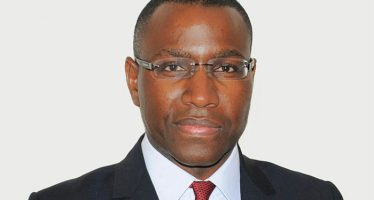World Bank Initiative for a Low Carbon Future
 The World Bank has announced a new Low-Carbon Liveable Cities (LC2) Initiative to support developing country cities around the world in their efforts to plan low-carbon, climate-smart development and get finance flowing. The initiative – which aims to reach 300 of the largest developing country cities in the next four years – offers a comprehensive suite of tools and activities tailored to cities’ specific needs and level of progress on their climate-smart development path, ranging from greenhouse gas inventories and assessments to low-carbon investment planning and financing solutions.
The World Bank has announced a new Low-Carbon Liveable Cities (LC2) Initiative to support developing country cities around the world in their efforts to plan low-carbon, climate-smart development and get finance flowing. The initiative – which aims to reach 300 of the largest developing country cities in the next four years – offers a comprehensive suite of tools and activities tailored to cities’ specific needs and level of progress on their climate-smart development path, ranging from greenhouse gas inventories and assessments to low-carbon investment planning and financing solutions.
“Climate change poses one of the toughest challenges facing us today. It’s an economic issue that has the potential to put prosperity out of the reach of millions of people,” said World Bank Group President Jim Yong Kim. “Cities offer a unique opportunity to tackle climate change. There are many cities in the developing world that want to take a climate-smart development path, and that is where our new initiative comes in.
“Climate change poses one of the toughest challenges facing us today. It’s an economic issue that has the potential to put prosperity out of the reach of millions of people. Cities offer a unique opportunity to tackle climate change. “
When it comes to planning, the first step is to understand the problem at hand. A recent analysis by World Bank staff found that only about 20 percent of the world’s 150 largest cities have even the basic analytics needed for low-carbon planning.
“Climate change poses one of the toughest challenges facing us today.”
A critical part of the Low-Carbon Liveable Cities Initiative is to build that evidence base, together with partners including the C40 network, ICLEI, WRI and others, by rolling out the Global Protocol for Community Scale Emissions, a new and comprehensive methodology that quantifies the greenhouse gas emissions associated with economic activity and consumption occurring in a city.
The World Bank and its partners are developing an accreditation program to train city officials and private sector professionals to conduct greenhouse gas inventories using this methodology. Those inventories will provide cities with a snapshot of their emissions profile and enable them to identify the mix of policies and investments that will help them achieve their full emissions reduction potential.
Unlocking private sector financing for low-carbon development
Smart planning is only one part of the solution. In order for those plans to be implemented, cities need to access the necessary financing. Over $1 trillion a year is needed to finance the infrastructure gap between what is needed and what is being built in low- and middle-income countries. Official development aid alone is only about $125 billion today. The initiative offers tools that can leverage that aid to get other sources of financing flowing to cities.
An analysis by World Bank staff of the 500 largest cities in developing countries shows that only a small percentage are deemed creditworthy – about 4 percent are creditworthy in international financial markets and 20 percent are creditworthy in local markets. The first step to get finance flowing for low-carbon planning is to make municipalities more attractive to private investors and help them access markets.
In this context, the World Bank and its partners have designed a City Creditworthiness Program to help city financial officers conduct thorough reviews of their municipal revenue management systems and take the first steps to qualify for a rating. The inaugural session of the City Creditworthiness Program is planned for Oct. 14-19 in Nairobi, Kenya, and additional trainings are planned in Korea, India, and Colombia.
Helping cities access private financing is a smart investment. Internal estimates from the World Bank indicate that every dollar invested in the creditworthiness of a developing country city is likely to mobilize more than US $100 in private sector financing for low-carbon and climate-resilient infrastructure.
Getting a rating is a long-term process and takes on average three to five years. The city of Lima, for example, took about four years to achieve creditworthiness. To jump-start the process and address immediate financing needs, the initiative will also leverage the World Bank’s experience with innovative financing solutions to develop mechanisms to attract more private capital to the sub-sovereign market. One example is a mechanism to pool financing opportunities. Connecting cities that want to finance the same type of investment, the initiative will help them access the market together at better financing terms.
Low-carbon development: A question of competitiveness
“For municipal governments, finding their way to a low-carbon development path is a question of competitiveness, growth and public health,” said World Bank Vice President for Sustainable Development Rachel Kyte.
Applying a climate lens to cities’ development plans means that energy savings will free up budget for other investments, resilient infrastructure will withstand the forces of nature, and citizens will have cleaner air to breathe.
The new initiative has the potential to improve the lives of over 700 million people in the cities it will help, and billions globally as emissions are reduced.
You may have an interest in also reading…
Lord Waverley: PM Should Appoint Envoys If UK is Serious About Free Trade Agreement with India
Every community in both countries stands to benefit from an accord that will stand the test of time and be
World Bank Group: Development Finance Frontline – Strategic Investment Funds
This is the first of a series of occasional interviews with senior strategic investment fund (SIF) professionals. Tasked with attracting
Lord Waverley: Tracing the Old Silk Road Shows History Carved a Path to Modern Values — and Vibrant Economies
Lord Waverley continues his journey through Central Asia, a little-known region nestled in a corner of the world that is


















































































